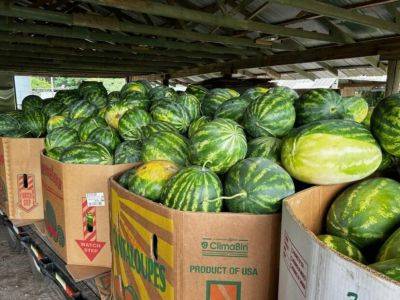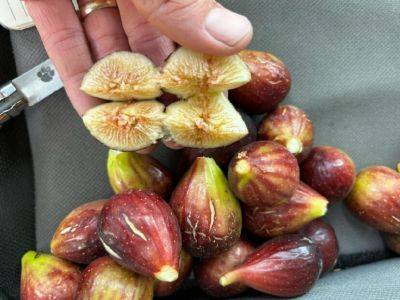Zack Snipes
SC Fruit and Vegetable Field Report – October 24, 2022
24.07.2023 - 11:55 / hgic.clemson.edu
Check out the new rainfall calculator on the Clemson Weather website. This feature calculates the amount of rainfall received in a particular location over a specified time.
Justin Ballew reports, “Temperatures turned cool for a few days in the Midlands this past week. We had two consecutive days where the low temperature was under 35°F in Lexington (low of 32.7°F) and four consecutive days in Pomaria (low of 29.7°F). As a result, our fall cucurbit, tomato, and pepper crops don’t have much time left (they’re mostly done in areas north of Lake Murray). Strawberry growers are in better shape than we expected. The vast majority have been planted, so we won’t be finishing up quite as late as we expected. Be sure to overhead water transplants to keep them from drying out (10-14 days for bare roots with leaves, 5-10 days for bare root cutoffs). Folks in other parts of the state with heavier soil often just use their drip to get transplants established, but I wouldn’t recommend this for growers in the coastal plain. Our sandy soil just doesn’t hold enough moisture. We’ve previously seen stand losses near 50 percent when overhead water isn’t used after planting.”
Andy Rollins reports, “Strawberry plantings are still being put in. Plant suppliers were late getting tips, and plant growth suffered in some cases. When planting these plugs, the bottom half of the plug doesn’t have any roots, and when planters try to pull them, it leaves the potting soil behind. Suppliers have recommended allowing these plants to grow a little longer in the trays for a better root system before planting them. We are thankful that the weather service is calling for a warmer winter, which will be greatly needed for many growers to get their plants
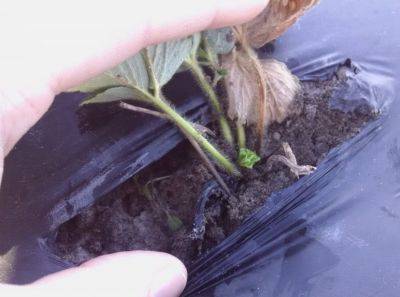
SC FRUIT AND VEGETABLE FIELD REPORT OCTOBER 18, 2021
Justin Ballew reports, “We had beautiful sunny weather last week that really helped dry things out. Strawberry transplants are due in this week and growers will start getting them in the ground as soon as they can. We have heard some reports of anthracnose coming from nurseries, so be sure to closely examine your plants and do not plant any that look weak. Since we are planting a little late, proper planting is all the more important. Be sue crews are planting transplants at the proper depth. Supervise them closely. Using row covers to push growing degree days may also be helpful this fall since most folks are planting a week or more late. There is a good article in this month’s NC Strawberry Association newsletter (pages 6-8) about using row covers in the fall.”

SC Fruit and Vegetable Field Report October 11, 2021
Rob Last reports, “We are progressing well with preparations for strawberry planting. Some plants are due to be delivered this week. Remember, if fumigants have been used, check to ensure the products have dissipated to prevent damage to the transplants. The same is true to make sure planting restrictions on any pre-emergence herbicides applications are observed. Always refer to the label. Finally, remember to check your plants carefully for pest and disease inoculum from the nursery. Planting any disease or pest-infected plants will lead to a more challenging growing season. If you require any help, please reach to Extension Agents.”
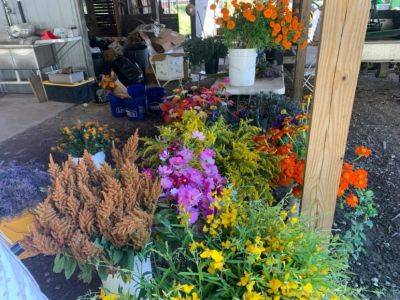
SC Fruit and Vegetable Field Report October 25, 2021
Zack Snipes reports, “We had a nice week of weather last week and are getting some rain this morning (10/25). Strawberry plants are arriving, and growers will be busy putting in plants this week. I’ve gotten several calls about doing plant dips to prevent disease for the upcoming season. Most growers are using Zivion, but it has been somewhat hard to come by, so others are using Switch. We are dipping plants to prevent crown rot diseases from wiping out our crop. Speaking of wiping out our crop…DEER. Get your fences up now BEFORE you plant. For more information on deer fencing, see HGIC 2902, Deer Management Using a Two-Tiered Fence System. We see black rot on brassicas every season, but it seems particularly bad this season. Cultural practices such as crop rotation, using clean seed and transplants, and spacing plants out can help with the disease. Unfortunately, there are no products that will help with this disease. We had a great fall watermelon crop that will be wrapping up here shortly.

SC Fruit and Vegetable Field Report January 18, 2022
Rob Last reports, “In our area, crops are developing well with few pest or disease issues currently. Some brassicas are displaying a reddening to the older leaves associated with reduced phosphorous uptake. Phosphorous uptake can be reduced in cold temperatures but will recover when we see some warmer temperatures. There is no response to an additional application. Where strawberries are flowering or have fruit, it is advisable to remove those to minimize sources of Botrytis gray mold for later in the year.”
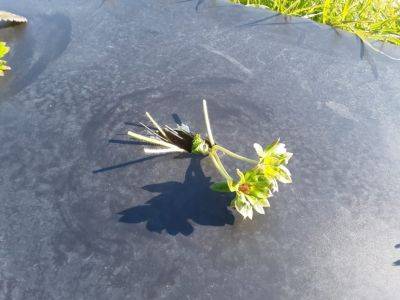
SC Fruit and Vegetable Field Report – January 31, 2022
Rob Last reports, “Pest and disease issues in the area remain very low; however, as temperatures rise, we expect activity to increase. Although it is quiet, it is still essential to continue to scout. Assessment of crops indicates that we have escaped the worst of any chill injury or loss of plants. Pruning of fruit crops continues while dormancy holds and labor begins to return to the area.”
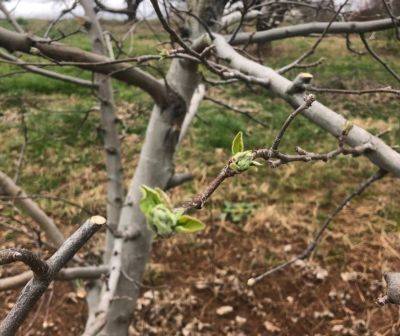
SC Fruit and Vegetable Field Report- March 14, 2022
Dr. Matt Cutulle reports, “I saw my first nutsedge plants this year pop up in the plastic mulch of a fellow researcher’s trial last week in Charleston. Soil temperatures in plastic mulch systems are going to be higher, which may lead to earlier sprouting of yellow nutsedge tubers. New tubers begin forming four to six weeks after a new shoot emerges. Individual nutsedge plants may eventually form patches 10 feet or more in diameter, thus it is important to practice field sanitation once an infestation is recognized.”
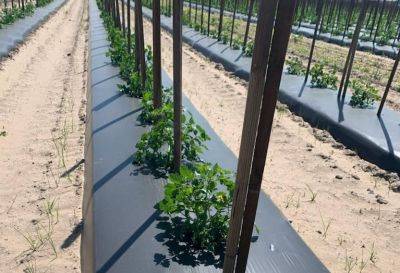
SC Fruit and Vegetable Field Report – April 18, 2022
Zack Snipes reports, “It has been a very windy spring. The winds are drying out our soils and beating up plants. I have looked at some tomatoes, and the ones that aren’t tied are wind-whipped, and the ones that are tied have callus tissue forming where the string is touching them. We have some beautiful lettuce and greens coming in right now, along with spring onions. I have also seen some squash coming in on farms that grew squash in high tunnels. Strawberry plants are still small and have very few blooms for this time of year. We are harvesting highbush blueberries in high volumes right now. I think we escaped more cold damage than previously expected.”
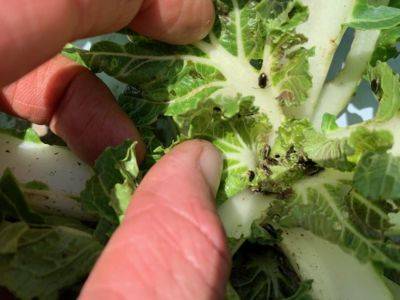
SC Fruit and Vegetable Field Report – May 31, 2022
Zack Snipes reports, “It seems like everything is coming in from the fields right now. We got some rain but could really use some more. I am seeing lots of aphids on a variety of crops (melons, cukes, eggplant). I am also seeing ladybird beetles and parasitized aphids in these fields, which means our predators are out there working for us. Bacterial wilt and Southern blight are starting to appear on tomatoes as well. Knowing the difference and preparing for next season’s crop is critical. It is getting hot and is still windy, so growers might consider adding one or more irrigation cycles to their fields. Remember that in our sandy soils, any irrigation event over an hour is just wasting water. More frequent 30-45 minute cycles are more efficient.”
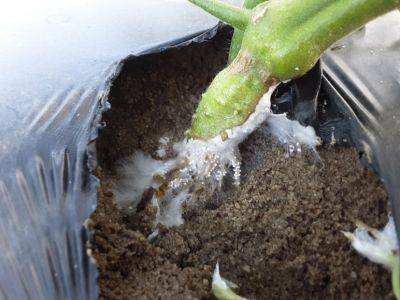
SC Fruit and Vegetable Field Report – June 6, 2022
Rob Last reports, “Insect and disease activity is increasing in the area, across a broad range of crops. In cucurbits, we are seeing powdery mildew and gummy stem blight in watermelon. Remember to keep spray intervals tight. Loopers are also being found in the area, and applications to manage rind worms will be beneficial as we rapidly approach harvest. Fusarium wilt of watermelons is showing up in many fields. At this stage, there is no effective treatment; however, soil temperatures are likely to reduce the incidence of new infections. Tomatoes and peppers are developing well with Southern blight and bacterial wilt in evidence. Spider mites are very active right now. Blackberries are just coming to harvest with good flavor and quality. Remember to scout your crops regularly to ensure timely applications can be made.”
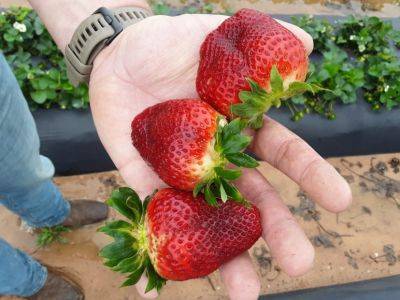
SC Fruit and Vegetable Field Report March 28, 2022
Rob Last reports, “The first of this season’s strawberries are coming to market with good quality. Growers still need to be very mindful of spider mites. Populations are around in the area but are variable. As we get into harvest season, gray mold management will be critical, so sanitation and appropriate fungicide applications will be needed. Otherwise, preparations for watermelon planting and some early cantaloupes have been sown. Damage assessments on later variety peaches will continue.”
